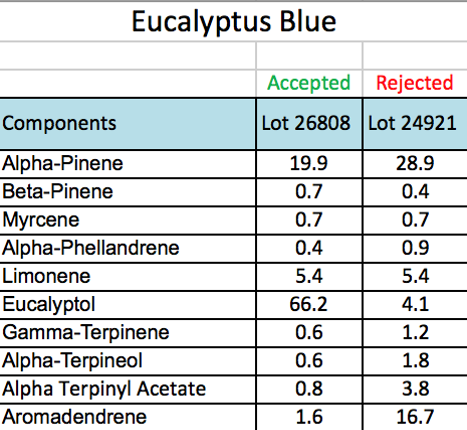The Importance of Testing

The first lot of eucalyptus blue met Gary’s standard. The other lot was extremely lacking in eucalyptol and was therefore rejected.
Here are some examples of essential oils and common adulterating agents: peppermint (cornmint, ethyl vanillin), rose (palmarosa, citronella, synthetic fractions), sandalwood (amyris, araucaria, diluted with glyceryl acetate, benzyl benzoate), ylang ylang (Peru balsam), clary sage (synthetic linalyl acetate, linaool), and geranium (palmarosa, citronella, synthetic compounds). All of these agents can be found during testing—IF your company does testing!
This is from a letter that was sent to me. “Dear Sir, I’m a French exporter who exports products from Provence to North America. I select very typical products which quality is unquestionable. I’d like to know if you would be interested in Provencal products like lavender essential oil made in France–50 percent lavender, 50 percent lavandin, 100 percent pure.” Pure lavender oil that is 50 percent lavandin? That’s not my idea of pure!
I get these letters all the time. Synthetic or adulterated oils. Mislabeled. Diluted. Adulteration can occur at any point in any production process.
I will show you two lots of eucalyptus blue, one accepted and one rejected. Why was the one rejected? Because the compounds did not meet my standard.

